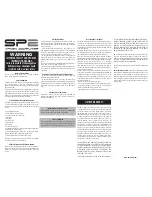
Concepts and features
R&S
®
ZNB/ZNBT
163
User Manual 1173.9163.02 ─ 62
Due to the analyzer's calibration wizard, calibration is a straightforward, menu-guided
process. Moreover, it is possible to perform the entire calibration process automatically
using a Calibration Unit (e.g. R&S
ZN-Z5x or R&S
ZN-Z15x).
The system error correction data determined in a calibration procedure are stored on
the analyzer. You can read these correction data using the remote control command
[SENSe<Ch>:]CORRection:CDATa
. You can also replace the correction data of the
analyzer by your own correction data sets.
Cal Off label
A label "Cal Off" appears in the trace line if the system error correction no longer
applies to the trace:
This can happen for one of the following reasons:
●
The sweep range is outside the calibrated frequency range.
●
The channel calibration is not sufficient for the measured quantity (e.g. a one-port
calibration has been performed, but the measured quantity is a transmission
parameter).
●
There is a mismatch between the current Frequency Offset settings and the Fre-
quency Offset settings that were used during calibration (see
●
There is a mismatch between the current sweep mode(s) and the sweep mode(s)
that were used during calibration (see
Chapter 4.1.4.5, "Stepped vs. swept mode"
●
The system error correction has been switched off deliberately ("User Cal Active" is
disabled).
The analyzer provides other labels to indicate the status of the current calibration; see
Chapter 4.5.4, "Calibration labels"
Calibration and port de-/activation
The analyzer fimware automatically activates/deactivates ports during/after a (success-
ful) calibration:
●
Calibrated ports that were previously disabled, are automatically enabled as single-
ended logical ports.
●
An uncalibrated port that is not used by a measurement (i.e. the port is not required
by any trace of the related channel) is disabled.
4.5.1
Calibration types
The analyzer provides a wide range of calibration types for one, two or more ports. The
calibration types differ in the number and types of standards used, the error terms, i.e.
the type of systematic errors corrected and the general accuracy. The following table
gives an overview.
Calibration
















































